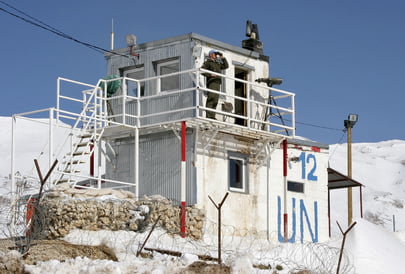The Syrian government is gleefully taking credit for an attack on an Israeli vehicle in the Golan Heights, marking the first time that Assad is publicly admitting to a direct attack on Israeli target since the outbreak of the civil war. Israel has reportedly struck back.
This was a skirmish. No one was reportedly killed. But it marks a potential turning point, and one that could jeopardize one of the UN’s longest standing peacekeeping missions.
The United Nations Disengagement Observer Force (UNDOF) was first deployed at the end of the 1973 Yom Kippur War, in which Israel captured the Golan Heights from Syria. Today, there are just over 900 troops whose main job is patrolling the boundary line between Israeli-occupied Golan and Syria. For nearly 40 years, the Mission succeeded at its most basic task, which was to deter aggression across the border between Syria and Israel. Having a few hundred international troops patrolling a slim demilitarized zone seemed to do the trick.
But in recent months, the mission has come under heavy stress. UN peacekeepers have twice been kidnapped by Syrian rebels and held for a few days before being released. Now, Israel and Syria are exchanging fire across the boundary outright. Such activity could portend the end of UNDOF as we know it.
These peacekeepers have virtually no ability to physically stop these skirmishes. If two countries want to resume a fight over the Golan, that would be a political decision that a few hundred peacekeepers cannot prevent. The point of the peacekeepers was always to give the two sides some breathing room and deter that political decision. They were never a real physical deterrent.
If Syria, or heavily armed rebels want to cross the line of demarcation, lightly armed peacekeeping units would be in no position to stop them. And once that decision has been made the logic that has sustained UNDOF for 35 years would suddenly vanish.
